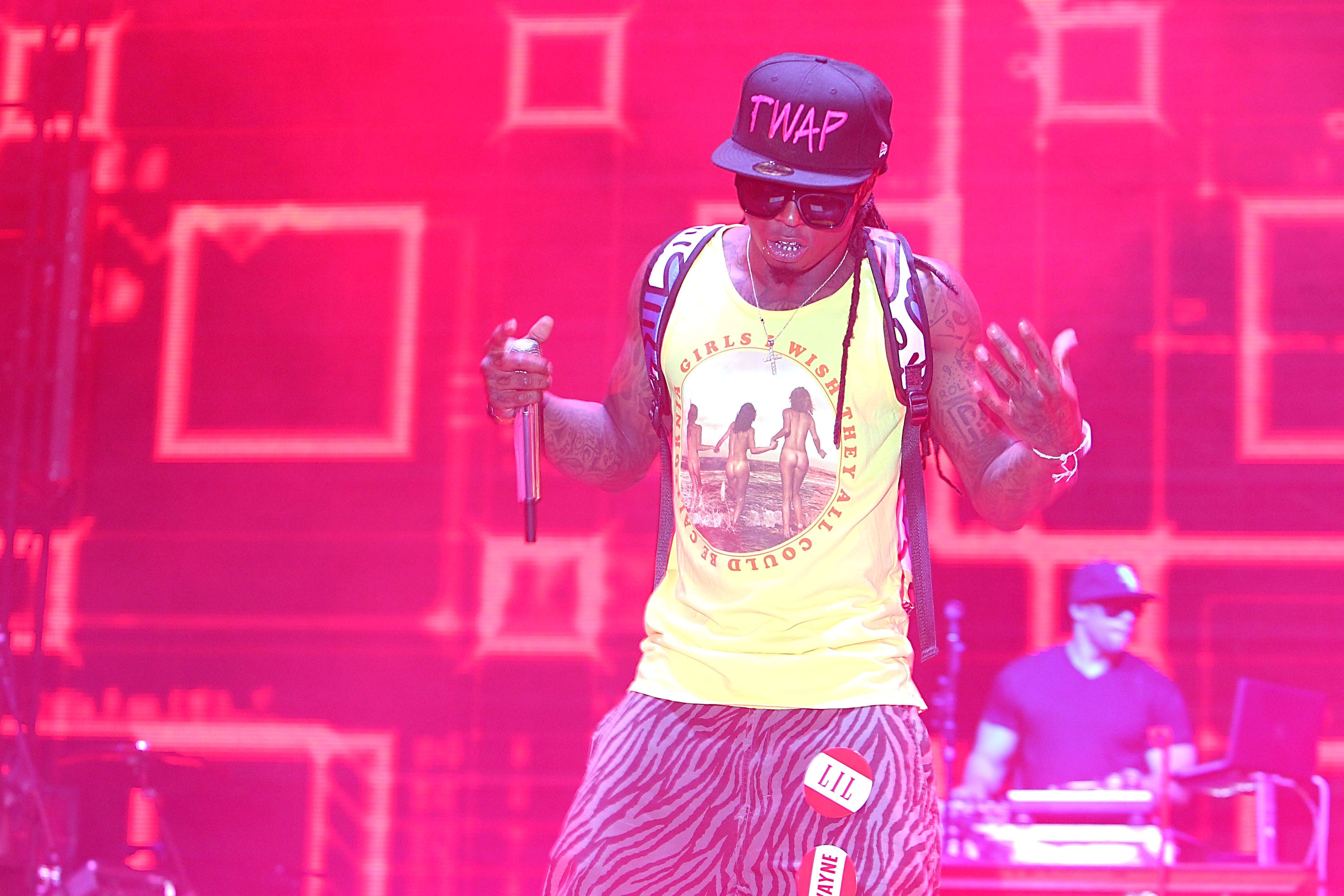In the headwear game, there isn’t a single hat that’s more classic, more ubiquitous, or more always-in-style than the baseball cap (take a breath, white guys rockin’ fedoras). Straight up, the baseball cap has been around since the 1800s (made from straw) and has been fully embraced by Americans since 1954. That’s the year New Era first dropped the iconic 59FIFTY fitted cap, now worn by every single player in the MLB, NFL, and NBA.
In the late ’80s and through the ’90s, the baseball cap took on a whole new level of popularity, thanks in large part to its favorability amongst hip-hop tastemakers like Eazy-E, the Fresh Prince, TLC, and Aaliyah. The item is now as essential a streetwear staple as dark denim, enjoying a lasting and mostly (we see you, bucket hats) unchallenged reign through multiple generations. As streetwear changes and grows, the baseball cap — whether fitted or snap-back (let’s not talk about trucker hats today) — has proven timeless.
What isn’t timeless is how people choose to wear their lids. Imagine for a second that you’ve just been gifted a brand new fitted cap from your favorite team. We’re not talking about those generic ones; we’re talking limited edition, pricey, prime materials. Something you’d be proud to wear. You now have a few critical decisions to make: Do you fold that bill? Remove the sticker? Or keep your hat in pristine condition, leave the bill flat, and make sure that shiny gold sticker is always perfectly visible and untouched?
We can’t answer those questions for you, but we can give you info on why folks started leaving the sizing-sticker on their flat and never-bent bills in the first place. Check it.
WATCH: A Nike Sneaker Easter Egg, Wu-Tang Collabs, And More In This Episode Of THE MASTERS.
When And Why Did People Start Doing It?

It’s hard to say when exactly people started rocking sizing tags and leaving their bills flat. All we know is that the trend took off sometime during the 90s and was favored by rappers like Mase, N.O.R.E., 50 Cent (this dude was everywhere at the time, take our word for it), Ludacris, and Lil Flip — who wrote a truly terrible song about the trend called, fittingly, “New Era.” Grunge rockers in the early 90s wore their brims fully curled — almost like telescopes through which they could view the world. By 1997’s “Can’t Nobody Hold Me Down,” video Mase has his brim flat. N.O.R.E.’s fitted was always clean and crisp.
Rather than tracing the history, it’s a lot easier to explain why the trend took off in the first place. As we mentioned before, the baseball cap is nearly timeless, it doesn’t need its form revamped. Instead, the fluctuations in style are much more subtle. Snapbacks were big in the 90s, which led to the fitted cap’s popularity in the ’00s and 10s, and now we’re back in an era where snapbacks are the hot thing. Fashion is largely reactionary, so the simplest answer to the question of “why” flat bills and sizing stickers became a thing is that it set them apart from snapbacks, which were traditionally curved, and had no need for sizing stickers.
Hip-hop stylist Marko the Curator — responsible for some of Diddy, Migos, and Travis Scott’s most iconic fits — explains that aspect of the phenomenon thusly.
“I think it was our generation’s rebellious stamp on it,” he says. “People were saying, ‘Hey, this is how we are wearing it and how we are doing things.’ I remember as a kid the cool thing to do was to leave the hangtag on it. I think the evolution of that was just leaving the sticker.”
Leaving the sticker on your hat and swearing to never bend the bill also spoke to people’s inner desire to flex. A fitted cap is a status symbol as much as it’s a fashion staple. In an era when flossing was a way for people in the streets to show that they’d made it, stickers and a lack of creases made a big statement: This is brand new because I can afford brand new shit. Or, “I just bought this, it’s authentic; I’m authentic, and I’m paid.” If you’re a sneakerhead who obsesses over cleaning your triple white AF1s so that they look as clean as the day you bought them, you know this feeling.
The gold sizing sticker has become so coveted that New Era makes a point of noting in their FAQ page that they do not offer replacement stickers. We asked New Era brand historian Jim Wannemacher why and he explained that the stickers have come to mean more than they were ever intended.
“Though these stickers were originally meant to serve as a way for customers to simply find their hat size, they’ve become part of the branding that tells everyone you’re wearing a genuine authentic New Era Cap,” he says. “We do not keep spare stickers and are unable to supply stickers if yours has been removed. It’s a badge of honor. It shows people that the person wearing it understands that this is the same cap the pro players wear onto the field of play.”
The fact that New Era has become “the” brand whose sticker is coveted is a masterstroke of marketing and luck. With plenty of fakes circulating, the brand somehow turned being “official” into a strength all its own.
“New Era was the go-to,” Marko the Curator explains. “The official joint! Just like Starter for the snapbacks and satin jackets. Mitchell&Ness for the throwbacks. We always wanted that real authentic stuff.”
The Trend Enters Parody Territory
Streetwear parallels hip-hop, and just like the braggadocio-heavy sh*t-talking of your favorite rap music, having the freshest look is a lot like having the hottest bars. That constant drive to be the freshest on the block was expertly satirized in the 2012 Key & Peele skit, “Dueling Hats,” in which two New York city frenemies try to one-up each other by getting caps that look newer and newer. What starts with a shiny sticker, tag-sporting New Era-esque cap, gets increasingly more outlandish until the point Jordan Peele’s character is wearing the sweatshop worker responsible for stitching together the hat, as his hat.
What makes “Dueling Hats” such a resonant skit — it’s been viewed almost nine million times since been re-uploaded to YouTube in July of last year — is that it gets to the heart of the fact that we dress for status, and being new or “fresh” is part of that. It takes some shots at the ridiculousness of the sticker and tag trend in particular and makes pointed criticism about the more unseen aspects of the fashion industry. Key and Peele weren’t the first people to take aim at the trend, but they did it in a way that didn’t talk down to people who liked the look of a factory-fresh cap. That’s what made the skit so effective and, you could argue, began the backlash against the trend.
It’s no surprise that just two years later Tyga and Chris Brown dropped a song almost as bad as Lil’ Flip’s “New Era” called “Snapbacks Back” and a year later GQ declared in an article that “It’s Time To Start Curving the Brim of Your Hat Again.”
The opening excerpt from that article sums up the point we’re trying to make here:
In the ’90s, curving the brim on one’s baseball cap was a hallmark of angsty teen rebellion, though in recent memory uber-stiff flat brim snapbacks have become the dominant look amongst kids and headwear aficionados alike. But now it seems that softer hats with broken-in brims are poised for a comeback—and they’re showing up on the domes of everyone from hip-hop fashion leaders to A-list actors.
In other words, sh*t changes. Typically through a stew of sports, music, movies or TV, and what’s actually seen on the street. And then again, sometimes sh*t changes back.
So Is Leaving The Sizing Sticker On Your Cap And Leaving The Bill Flat Still Cool?

No, not really. That isn’t to say that if you walk down the block with your brand new un-bent sticker sporting fitted cap people are going to stop in their tracks and laugh at you. In fact, we’re willing to bet that you’re bound to see other people doing the same. You’re also going to see a whole lot of people wearing well-worn dad hats with bent brims and stains. Right now, when it comes to headwear, almost anything goes, except transparent visors and white guys wearing fedoras (sorry, dudes, but you get literally everything else).
You can expect Kendrick Lamar, Dev Hynes, or Travis Scott to rock their caps sans stickers and with a considerable bend on the bill, and yet other rappers like Chance the Rapper are sticking with the sticker-sporting fitted with a slight bend. We’re living in an incredibly fluid time in modern fashion (a New Era, one might say?), where individuals are less constrained by the subcultures we identify with and more concerned with just putting together a good fit. That ought to feel liberating.
“At first, we thought it was pretty funny that customers were leaving the stickers and tags on their hats because that was never their intended purpose,” New Era’s Wannemacher says. “But now it’s become almost synonymous with the branding of a New Era hat, and we support people who want to leave it on… We also want everyone to know it is a choice. For those who don’t want to follow that trend, they can easily take them off and curve the visor to fit their style.”
Very non-committal but also very true: You do you. Whereas a shiny sticker and a flat bill were once used to telegraph that something was authentic, in 2020 there’s nothing more authentic than just dressing how you like to dress.
Wearing your hat backward like Rocky, going for a slight bend like Chance, or keeping that bill flat like 50 Cent in 2006 — right now the coolest thing in modern streetwear is wearing whatever the hell you want.




